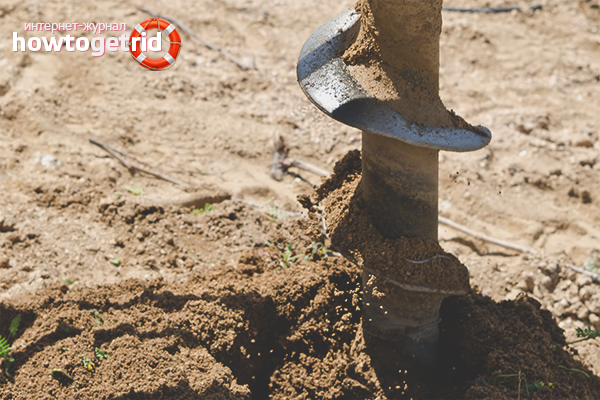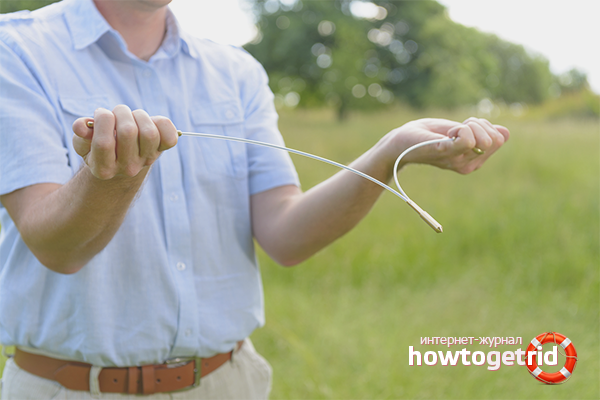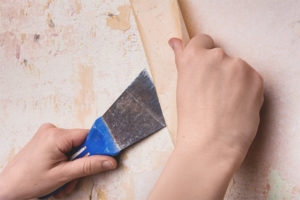The content of the article
Country living in their own home is becoming increasingly popular. Indeed, instead of breathing smog in cities, why not move to the bosom of nature and give the body, and the soul, a rest? But after all, even in a private home, convenience is paramount. In the first place, of course, normal water supply. One of the best solutions is a private well. But how to find the perfect place for her, we will tell.
Well: the pros and cons
The well is a great alternative to the central water supply. It is indispensable where communal amenities are not carried out, and is very convenient where all issues have already been resolved with water. Many people refuse central pipes, preferring to create individual ones. And it is clear why.
- The well takes water to a considerable depth (about 20-50 meters), so a clear and tasty liquid will flow from the tap;
- In borehole water supply, industrial purification plants are not used, it is not chlorinated, but only filtered;
- You get your own, independent, source that will function continuously and as much as you need;
- The well is a fully regulated structure. You can strengthen or weaken the pressure, install additional filters. In general, here you are the rightful owner;
- Finally, what flows from the well is environmentally friendly. Want to drink straight from the tap. Having tasted at least once pure water from the bowels of our planet, you will once and for all abandon industrial oil because the well is much tastier and softer. In addition, it often contains minerals, making the fluid alive.
Agree, there are a lot of pluses. That is why most people, especially families with children, make a choice in favor of such water supply. But! Of course, there are downsides. And not to be subjective, let's consider them.
- Well water is underground resources. If you do not put the correct pump and filter, you can get a liquid mixed with dirt, small particles and various suspensions.
- Taste.Unfortunately, it is not always pleasant at the well water. Sometimes, because of the minerals contained, you can feel a metallic taste, and if the water stagnates, you catch the smell of the swamp. The well must be used constantly and regularly to pump!
- Depth. The optimum is about 40 meters. Sometimes they dig a little deeper, sometimes vice versa, but approximately within such limits. The principle, the deeper, the better it does not work here, unless, of course, you have a goal to get to the mineral water. But remember that mineral water, which can be found on about 100 meters and more, is not suitable for permanent use.
- Well - expensive, despite the fact that it does not require special care. To install it on the site, you will need a significant amount of money. But this is a durable structure that constantly provides clean water.
In deciding, carefully weigh all the pros and cons. Today, the well is one of the best alternatives to all other types of water supply for a private house (including central water supply and traditional wells).
Main question: where to drill
The construction is built by drilling the earth to a depth of several tens of meters. The result is a fairly narrow mine, which is constantly filled with water. Towards the middle, a special pump is installed, which pumps out the fluid and pipes it. Also, each well has cleaning filters, there are several of them. With the right approach, you get an environmentally friendly product.
The most important task is to find the right place in which to drill a well. It is important that it is constantly filled with water, and there were no interruptions. How to do it?
There are several ways. They can be reduced to just two groups: modern scientific and traditional folk. Each is effective in its own way. But if you conduct a combined study, using several at once, you are guaranteed to find the perfect place for your own source of life-giving moisture.
If you want the most delicious liquid - you need to find a third aquifer, which runs just about 40-50 meters. Let's look at how groundwater is formed.
So, the rain comes from above. It can be hail, rain, snow - anything.The liquid, getting on the soil, is partially absorbed by plants, partially evaporates, but most of it leaks inside. Passing through the soil, it is not only cleared, but also saturated with mineral compounds. The very first layer of groundwater passes approximately 10-20 meters from the surface. It is not completely clean and not very rich. Not suitable for food.
The second layer accumulates at a depth of about 25-30 meters. This is already much cleaner water, past several levels of natural filtration, quite pleasant. But the best is the third layer, formed about a half dozen meters below. This liquid has an optimal degree of purification, moderately mineralized, very tasty and soft. Waters that run even lower are already classified as mineral. They have a salty taste and are suitable as food supplements, but not for regular use.
Popular wisdom, or follow nature
The method of dowsing has long been invented, and it is quite effective. Take a fresh-cut willow in each hand over the twig and walk around the plot. Where the vines reach out to each other, wanting to cross, the aquifer is located. But there are other ways.
- Observation of plants. The moment when nature itself tells where to drill. If you see a wildly overgrown woodlice, horsetail, any other moisture-loving plants - then the water passes very close to the surface. In such places there are usually many deeper underground sources. Pay attention to the birch. In those places where the soil is saturated with moisture, a knotty trunk, branches like panicles (long scraps hanging down) are formed near the trees. An excellent indicator of deep layers is pine. She does not like a wet surface, but goes deep into the roots in search of good water. Where the pine is good, there is always deep groundwater.
- Natural phenomena. Where there is a lot of moisture, fog forms - the most important rule. On a cool evening after a hot day, carefully inspect the site. If you find a swirling mist, then there is water downstairs. If he, as they say, “stands rocker”, it means that there is a lot of moisture. The terrain is important too. Groundwater bodies are usually located where we observe natural meadows, depressions. But on elevations, as a rule, there is no water or it runs very deep.
- Clay dishes. Very ancient and at the same time a sure way. Everything is simple: in the place where the well is supposed to be laid, an ordinary clay pot is placed bottom up. This is done at night. In the morning the dishes are checked: if fogging has formed on the walls and condensate droplets have appeared, it means that there is water here.
These methods were born to our brave people, tested for centuries, and have even been confirmed by science. But if you need even clearer knowledge, then you can take advantage of modern achievements.
Based on science and technology
The barometer will help if there is a reservoir nearby. The method will tell you how deep the aquifer passes. Measure the pressure on your site, and then go down to the pond and measure there. Then use the simple rule: every 13 meters differential is 1 division on a mercury column. In other words, if the difference between the pressure at the site and the pressure near the reservoir was about half a millimeter of mercury, then the water passes at a depth of 6.5 meters at the location of the proposed well.
But the surest way is reconnaissance drilling. With the help of a special tool - a probe in the prospective well, the presence of water and its depth are determined. Finally, you can resort to using silica gel. This is a special crumbly material that actively absorbs moisture. Before use, it is dried, then wrapped in cloth and buried to a depth of about one and a half meters at the place of the proposed well (before this, silica gel must be weighed). After a day, dig and weigh again. The heavier the substance, the more water in the soil.
The well is a very useful structure. With the right approach, it will constantly provide clean water. That is why it is important to correctly determine where to drill it.
Video: water well exploration drilling













To send